Herbal teas, which tea experts term Tisanes (a French word for "herbal infusion"), are usually dried flowers, fruits or herbs steeped in boiling water
Dragonfruit
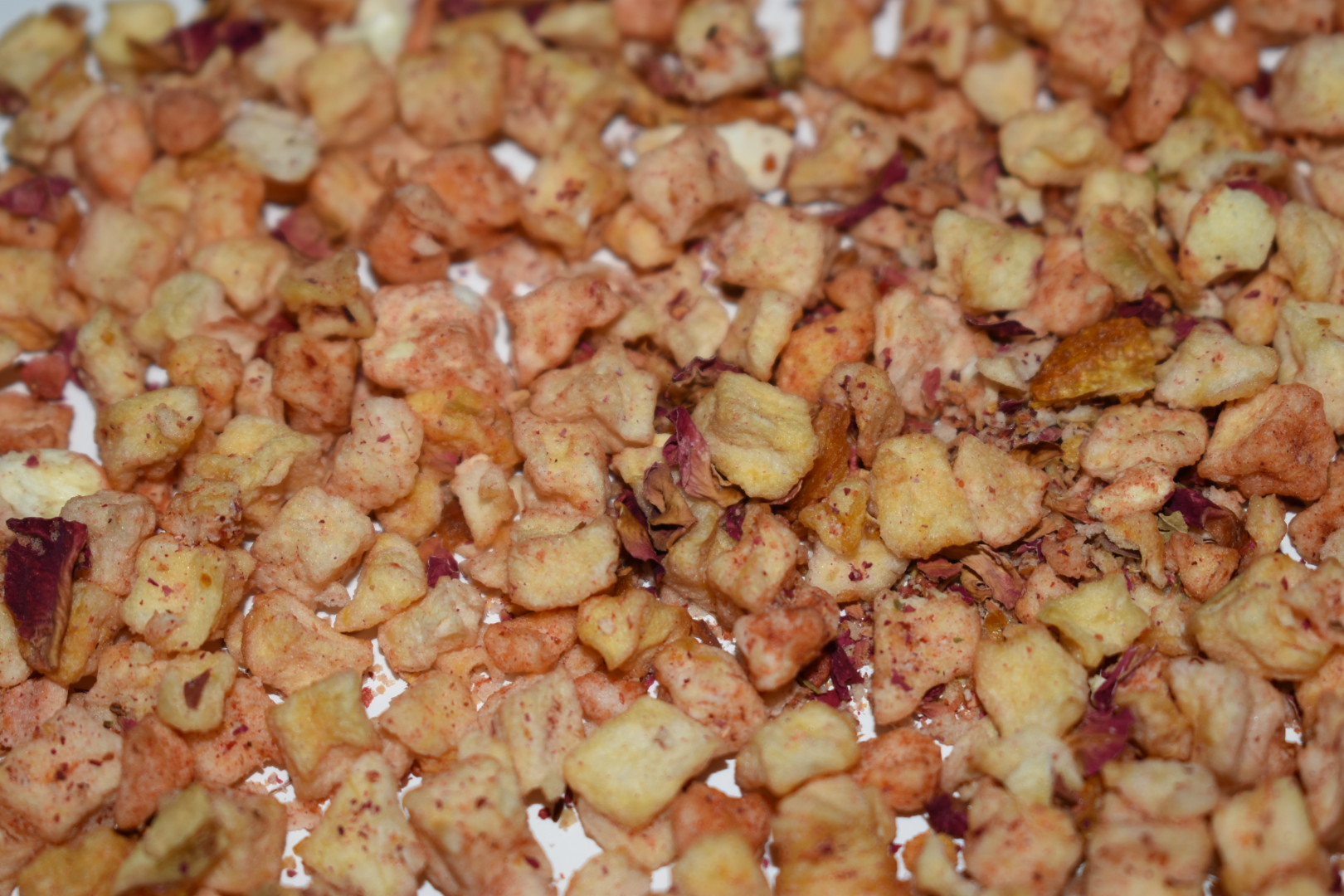
Buy Now
Lemonade Punch
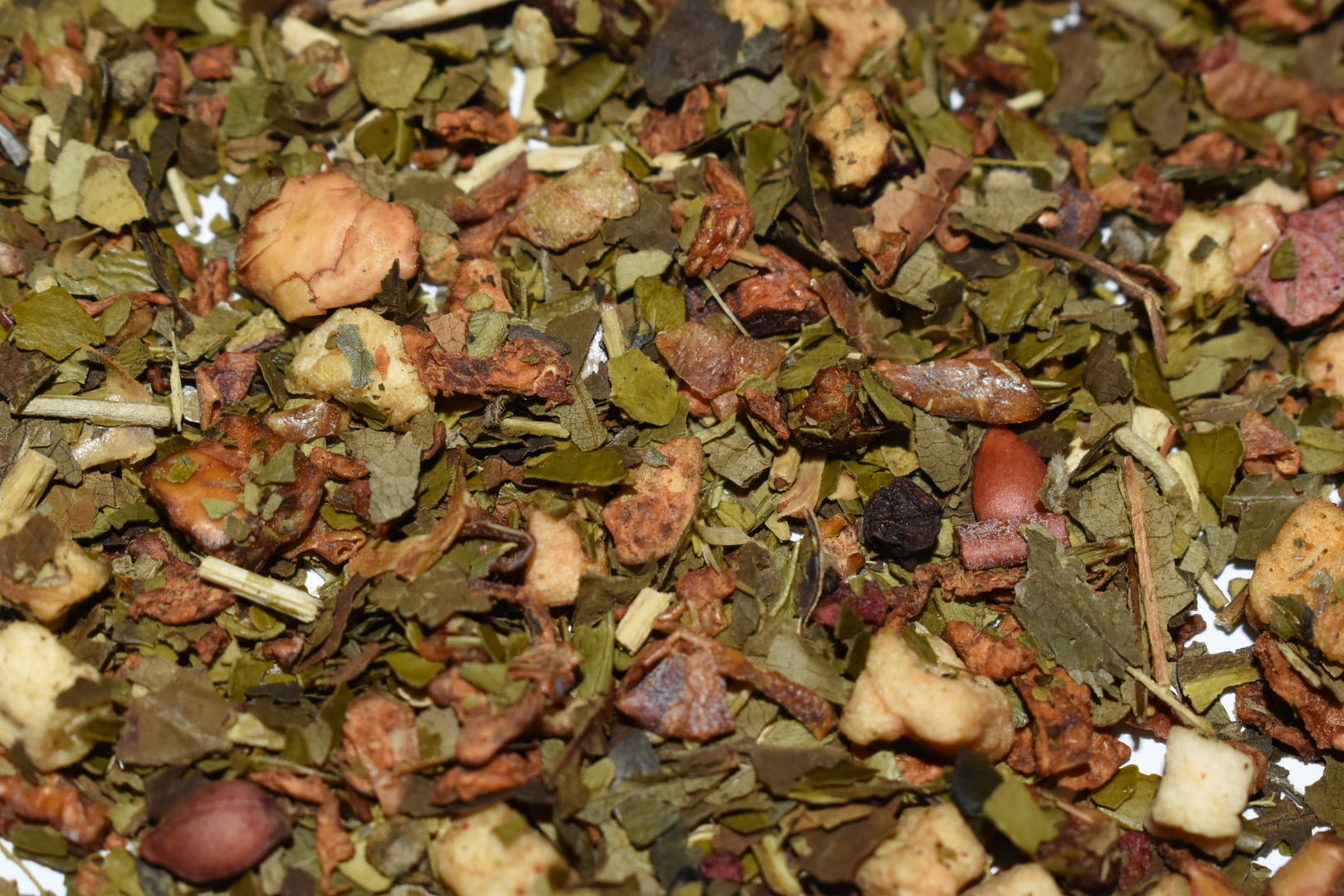
Buy Now
Egyptian Chamomile

Buy Now
Berry Fusion
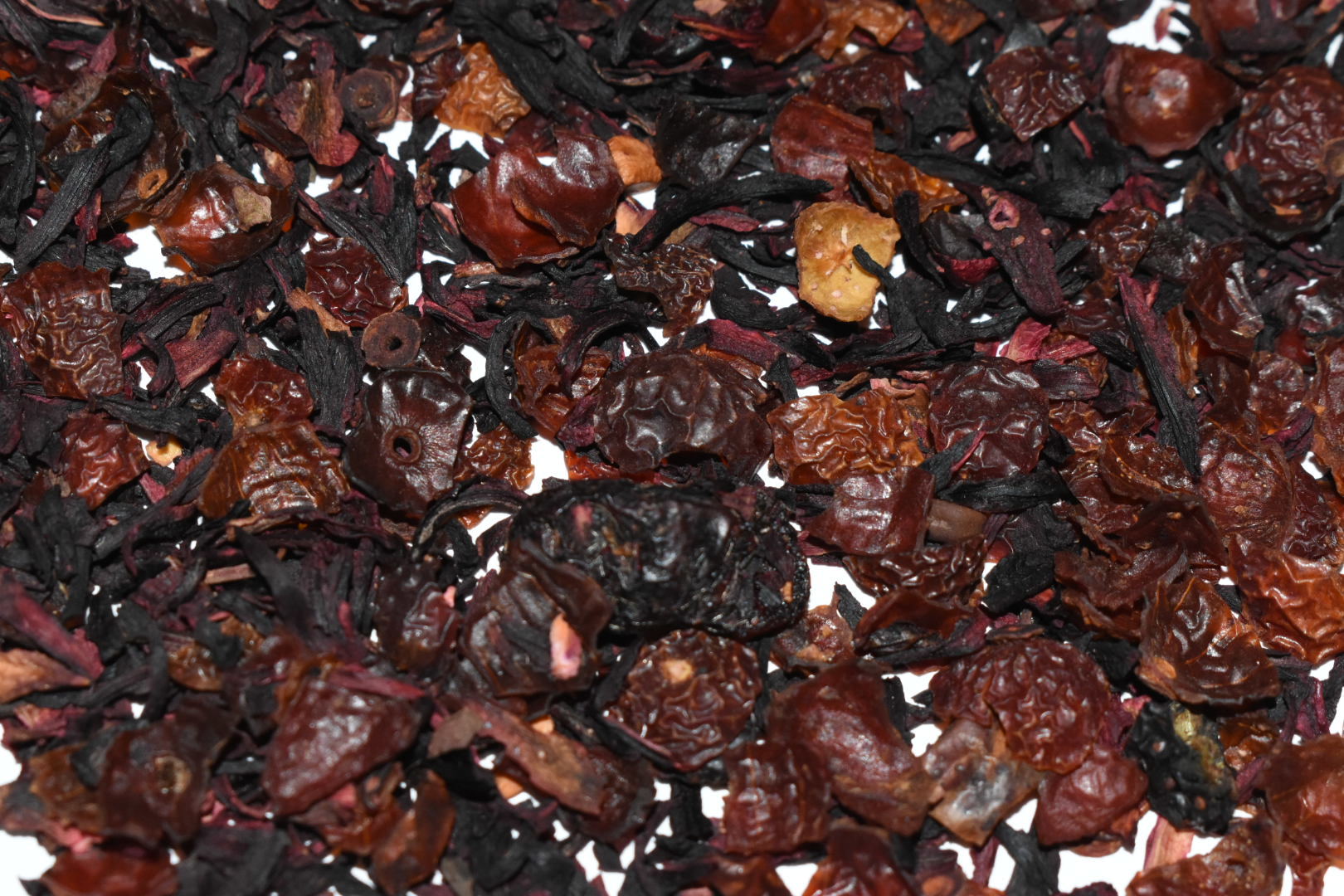
Buy Now
Pecan Rooibos
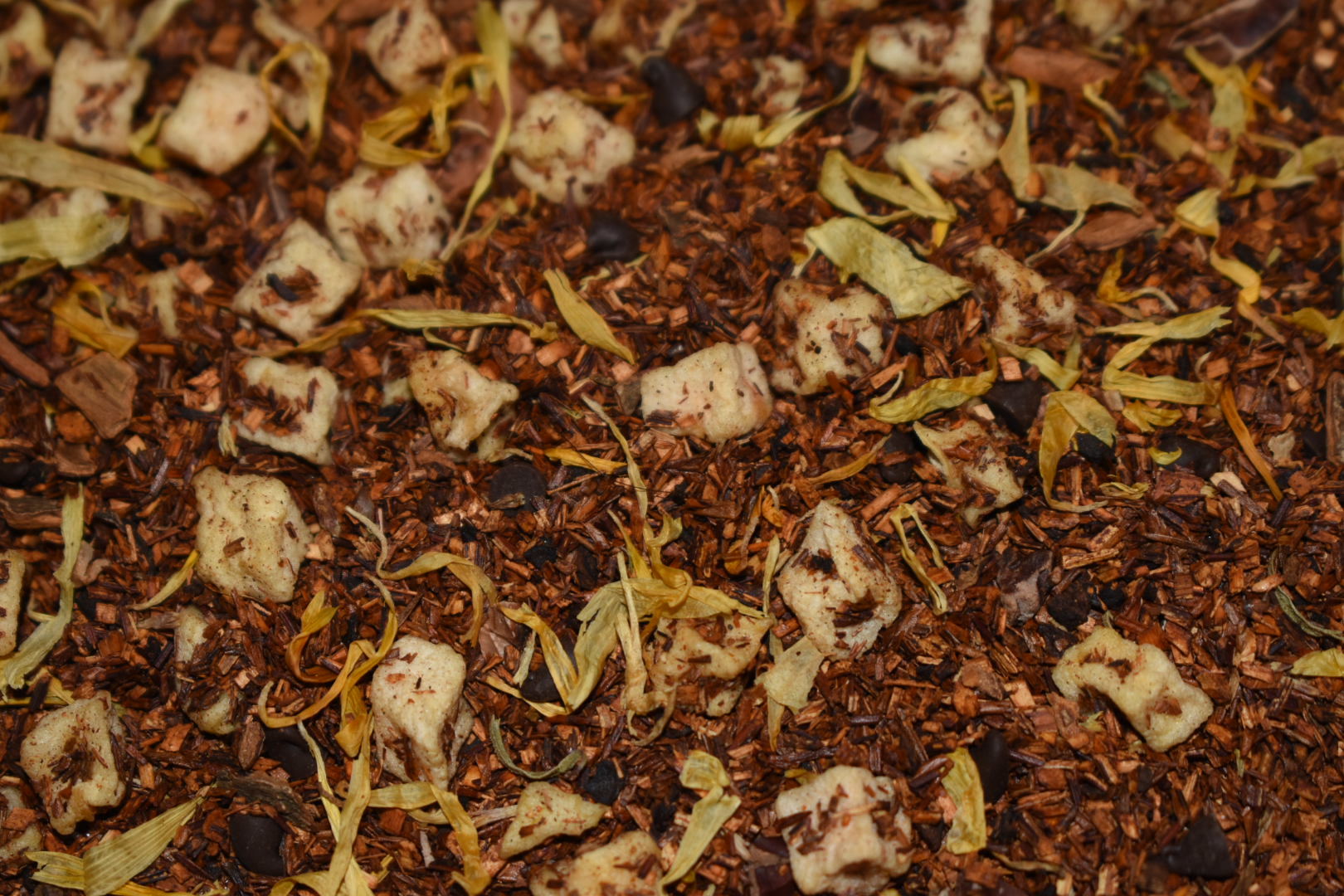
Buy Now
Orange Hibiscus

Buy Now
Strawberry Bliss
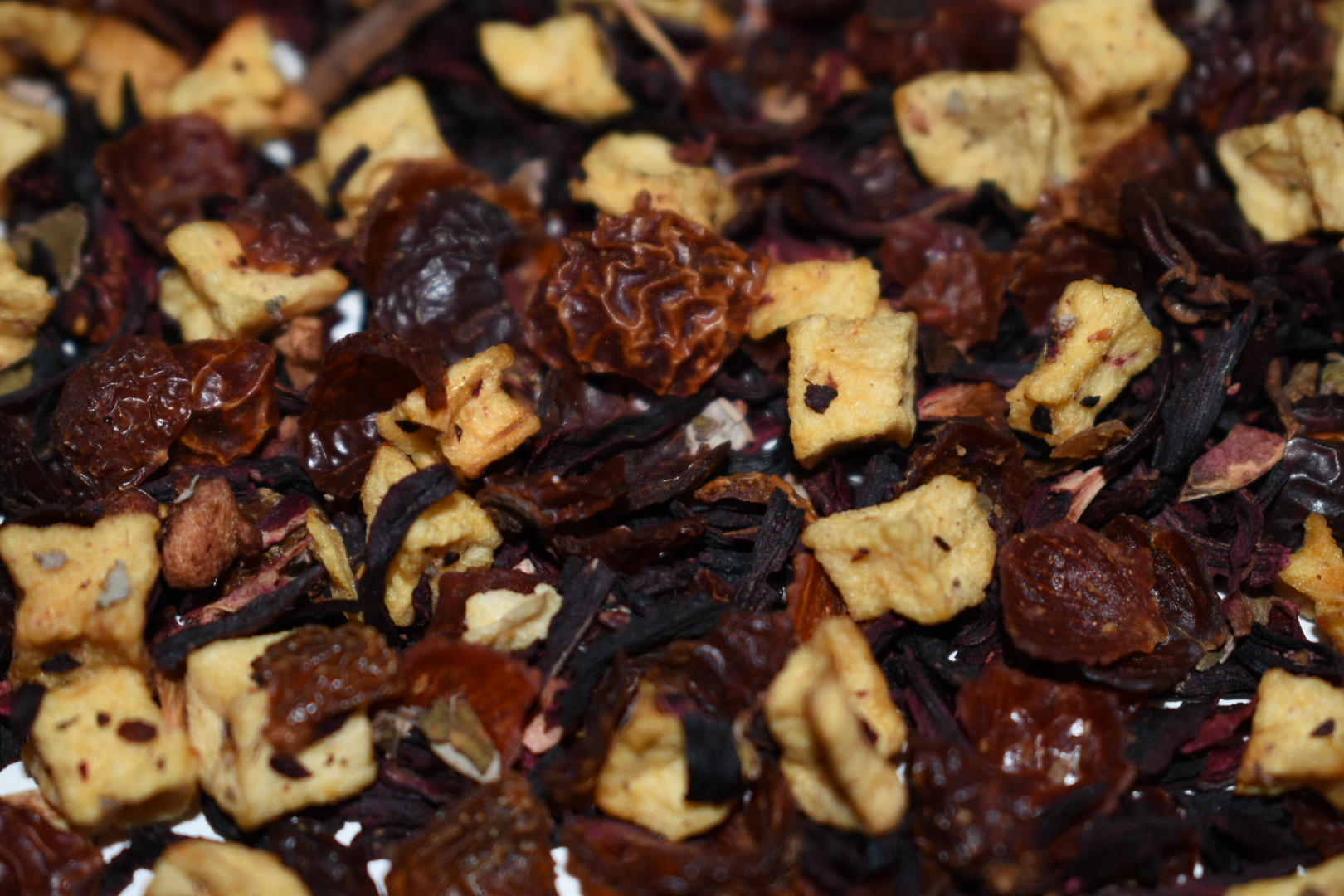
Buy Now
Herbal Tea
~Teas & Such
"What is tea?" To answer this question, we much first answer "What is not tea?"
A confusing aspect of learning about tea is that many of the beverages which are called "tea" are actually not tea. Herbal teas, which tea experts term Tisanes (a French word for "herbal infusion"), are usually dried flowers, fruits or herbs steeped in boiling water. No actual tea leaves are included in these beverages. Historically consumed for medicinal reasons or as a caffeine-free alternative, many tisanes are finding their way into the tea community. In other countries, the use of the word "tea" is legally regulated to only apply to Camellia sinensis beverages.

Herbal "teas"
The arguably most famous herbal tea finds its roots in ancient Egypt. The first recorded mention of Chamomile being enjoyed was in a document known as the Ebers Papyrus, dating back to 1550 BC. Used to honor the gods, embalm the dead and cure the sick, chamomile has endured a lasting fame. This light, sweet, apple-like and floral beverage is still revered for its uncanny calming effect.
The arguably most famous herbal tea finds its roots in ancient Egypt. The first recorded mention of Chamomile being enjoyed was in a document known as the Ebers Papyrus, dating back to 1550 BC. Used to honor the gods, embalm the dead and cure the sick, chamomile has endured a lasting fame. This light, sweet, apple-like and floral beverage is still revered for its uncanny calming effect.
Peppermint has been used as a caffeine-free home remedy aiding digestion and soothing the stomach for millennia, dating back to the Greeks. During these times, tables were rubbed with Peppermint to make dining more pleasant. However, not all herbal teas of that time were so pleasant. Some were, in fact, deadly. Philosophers kindly remind us that. Socrates, the father of modern thought, was sentenced to death by drinking a brew known as Hemlock. Hemlock remains unavailable in many places, due to its unfortunate side effects.
Fruit "teas"
Fruit teas or tisanes are caffeine-free blends containing a range of fruits, spices and herbs. The most common ingredient in fruit teas is Hibiscus, a crimson flower that yields a deep red color to the cup and a powerful tart sweetness. Hibiscus is naturally high in Vitamin C. Tea blenders use dried fruits, fruit peel, fruit oils, blossoms and spices to achieve just the right blend of visual appeal and flavor profile.
Fruit teas or tisanes are caffeine-free blends containing a range of fruits, spices and herbs. The most common ingredient in fruit teas is Hibiscus, a crimson flower that yields a deep red color to the cup and a powerful tart sweetness. Hibiscus is naturally high in Vitamin C. Tea blenders use dried fruits, fruit peel, fruit oils, blossoms and spices to achieve just the right blend of visual appeal and flavor profile.
Rooibos
A newcomer to the tisane scene, Rooibos has skyrocketed in popularity. Also known as "Red Bush Tea" or simply "Red Tea," Rooibos was introduced as a substitute for black tea. During World War II, virtually all supplies of Japanese and Chinese teas suddenly became unavailable. The tea-addicted Western culture scoured the world for an alternative, finally discovering caffeine-free rooibos, which grows only in South Africa. Rooibos has a rich, slightly sweet flavor that is excellent alone and blends extremely well with a variety of flavors.
A newcomer to the tisane scene, Rooibos has skyrocketed in popularity. Also known as "Red Bush Tea" or simply "Red Tea," Rooibos was introduced as a substitute for black tea. During World War II, virtually all supplies of Japanese and Chinese teas suddenly became unavailable. The tea-addicted Western culture scoured the world for an alternative, finally discovering caffeine-free rooibos, which grows only in South Africa. Rooibos has a rich, slightly sweet flavor that is excellent alone and blends extremely well with a variety of flavors.
Yerba Mate
Finally, the newest drink to the herbal market is called Yerba Mate. This South American botanical from the holly family is consumed throughout much of Brazil, Argentina, Paraguay, Uruguay and the Far East. Yerba Mate, or simply "Mate" is a cultural phenomenon that both energizes and remedies the body. Mate is one of the few plants on earth, along with coffee, cocoa and tea, that contain caffeine. While the herby taste tends to be a bit unusual to newcomers, after a few sips, most folks embrace it like it one of their own. Originally stranded in the obscurity of the niche cultural market, mate has now been introduced to the US as a substitute for coffee and is attracting wider attention.
Finally, the newest drink to the herbal market is called Yerba Mate. This South American botanical from the holly family is consumed throughout much of Brazil, Argentina, Paraguay, Uruguay and the Far East. Yerba Mate, or simply "Mate" is a cultural phenomenon that both energizes and remedies the body. Mate is one of the few plants on earth, along with coffee, cocoa and tea, that contain caffeine. While the herby taste tends to be a bit unusual to newcomers, after a few sips, most folks embrace it like it one of their own. Originally stranded in the obscurity of the niche cultural market, mate has now been introduced to the US as a substitute for coffee and is attracting wider attention.
Herbal blends, considered as a mixture of these herbs are also growing in popularity. The wide diversity of tisanes available makes the combination possibilities virtually unlimited. No longer a drink merely for the pregnant, caffeine-sensitive or those trying to catch some z's, Herbals have found a new place in the market. Tisanes are beginning to infuse culture with a wide range of tastes and astounding array of benefits. They have now been separated from both Teas and Coffee and should be recognized as such.
Tea Flavorings
One of the most prized and amazing characteristics of tea is the dizzying array of natural flavors and aromas that can be coaxed from this single leaf by variations in climate, geography and processing. That said, we must be careful to avoid becoming tea snobs. There is nothing unnatural about adding the sweet fragrance of a jasmine blossom to the cup - or any other herb fruit or spice for that matter.
Inclusions are blossoms, pieces of dried fruit, herbs or spices that are added to the tea leaves for either visual or sensory effect.
Extracts are flavoring agents derived by extracting the essential oils from the leaves, fruits, blossoms, roots or other parts of a plant. These "essential oils" carry the distinctive scents or flavors that we come to expect from that plant. Some extracts can be obtained as simply as pressing a lemon peel to produce oil, while others require much more complex means of extraction, like soaking vanilla beans in alcohol.
Nature-Identical flavoring agents are obtained from natural substances with the aid of chemical synthesis. The end product has the identical chemical structure as the "Natural" flavor but was derived by a chemist. Nature-identical flavors tend to be more stable than purely natural flavoring extracts and are usually significantly less expensive. The vast majority of flavored products are flavored with nature-identical flavors. Unfortunately the FDA does not have a classification for this and they consider nature-identical to be "artificial".
Artificial Flavors are created by altering the chemical structure of a naturally occurring molecule to create a different, more intense, or less expensive flavor. These molecules do not exist in nature. Adagio does not use this type of artificial flavoring agent in any of our blends.
A tea can be flavored through the addition of inclusions, by being coated in extracts, or by being scented. Often more than one method is used. Most inclusions alter the flavor or aroma of the cup in some ways, but are not strong enough to deliver the punch we're looking for.
Most "flavored" teas, are flavored with Natural Identical flavoring agents. These flavoring agents are thicker than water but usually thinner than olive oil. The total amount of agent applied depends on the flavor and desired strength, but usually falls between 0.5% and 5% of the weight of the tea being flavored.
Top
Back
